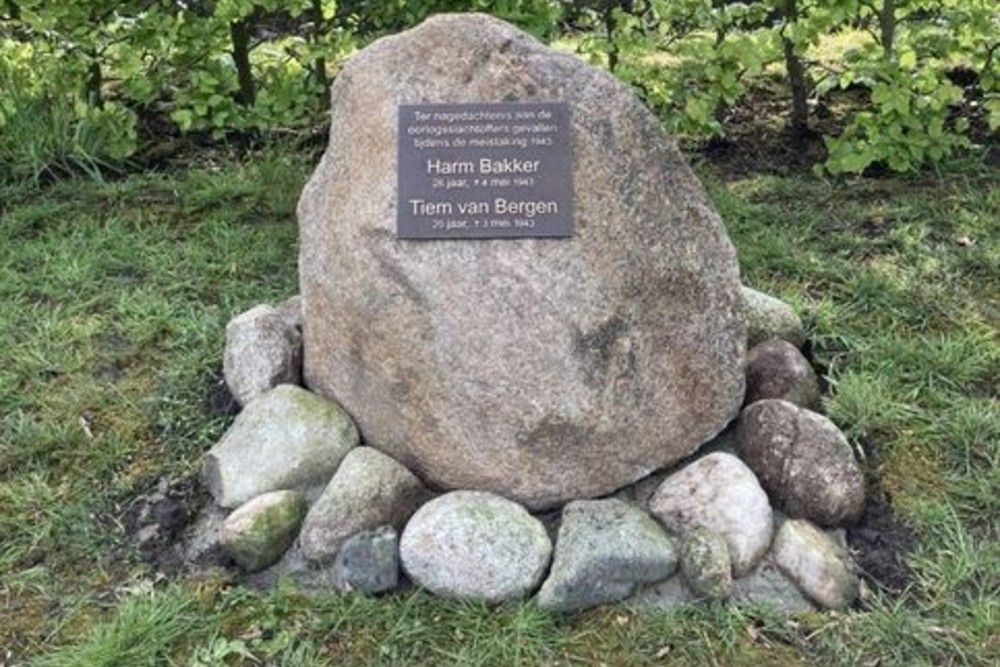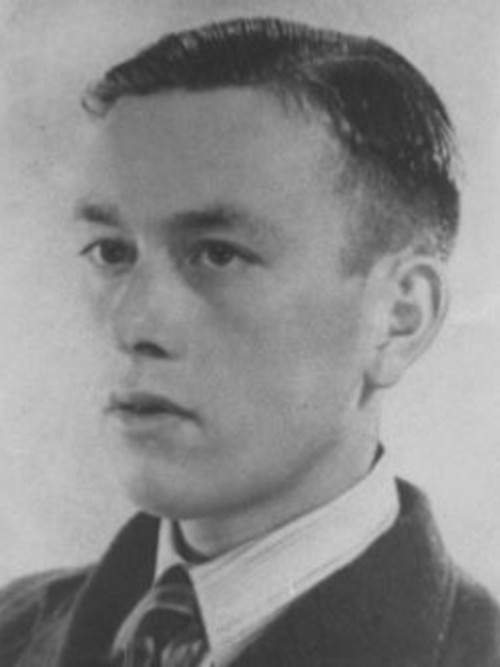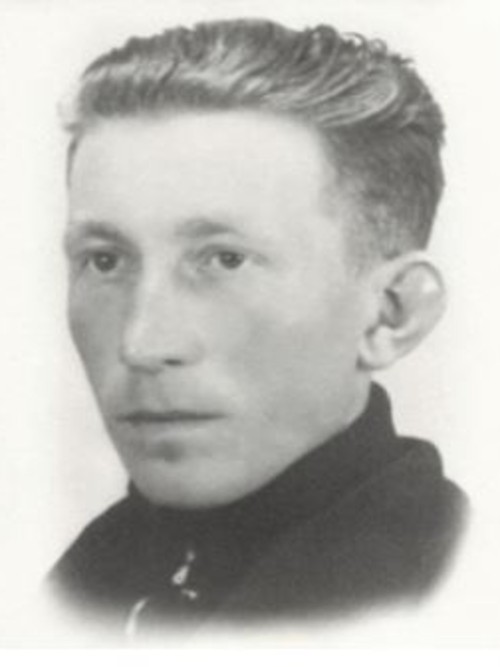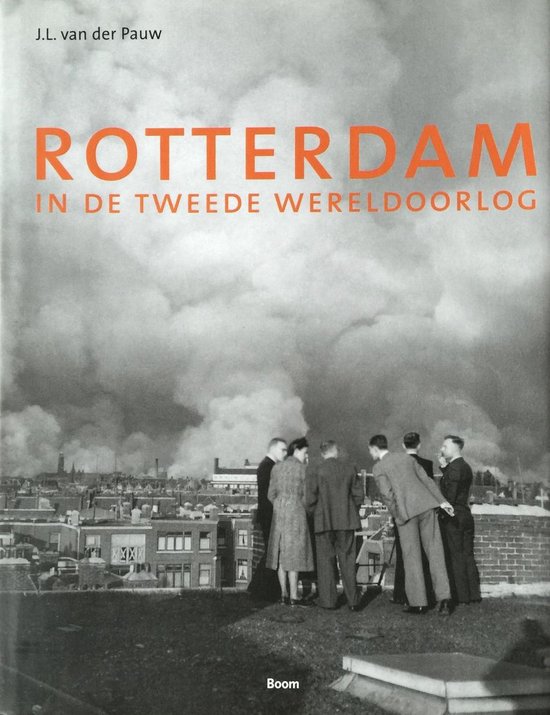Memorial Inhabitants Roderesch
On May 2, 1943, a card evening took place in Café Giezen at the beginning of the Hoofdweg in Roderesch. Several boys from Roderesch were sitting at the bar making plans for the next day. Just like elsewhere in the Netherlands, they wanted to go on strike. This included Harm Bakker and his brother Jan and Tiem van Bergen. The Bakkers and the Van Bergens lived in small farms on the Hoofdweg. Harm was the eldest at home, his father had passed away. They kept horses. During the day, Harm worked as a warehouse servant in a grain warehouse in Groningen on the Aweg. Tiem van Bergen – they called him Tiempie – was younger and worked with his parents – his father was a forester – on their small farm.
Why did they want to strike? On April 29, 1943, the Germans had decided that all 300,000 Dutch people who had fought against the Germans in 1940 had to report to work in Germany. That decision went down very badly with many Dutch people and spontaneous strikes started throughout the Netherlands. The boys in café Giezen in Roderesch discussed what they could do.
The next day - May 3, 1943 - Marchienus Giezen from Steenbergen started his daily milk ride. He collected the milk cans from the farmers with his horse and cart and brought them to the dairy in Roden. Several farmers had not put their milk cans outside. When Marchienus arrived at café Giezen, his cart was not as full as usual. When he stopped at the café, a number of young men approached and began to pull the buses off the cart and empty them. They included Harm Bakker, his brother Jan, and Klaas Giezen.
When farmer Brouwer walked to the café after breakfast to do an errand, he found a group of people talking to each other at the milk truck. Tiem van Bergen was also there. It later turned out that this group of people had been seen by NSB member Jaap Luitjens, the son of the vet in Roden. He gave the names of the men standing there to the town hall.
NSB member Hagenauw had warned the Germans early on that day that there was going to be a strike in Roden. The Germans sent a truck with armed policemen from Assen to the town hall. NSB secretary Jan Kemkers climbed aboard and would show the Germans the way to the men Luitjens had mentioned.
In Roden itself, several farmers had not put their milk cans outside. Dairy workers went on strike. NSB mayor Bruininga was in all states: strikes in his municipality. He was ordered by the Germans to arrest six strikers. He demanded the names of farmers who had not supplied milk at the dairy.
Meanwhile, the German police drove Kemkers to Roderesch. Harm and Jan Bakker and Johannes Kalfsbeek were arrested there. Under the guard of an armed policeman, they had to climb onto the truck. At the house of Klaas Giezen, it turned out that he was not at home and that also applied to Geert Brouwer, who had hidden in a ditch. From there the truck went to the main road. They came to Van Bergen's farm, where Tiem was picking potatoes next to the house. Kemkers saw him and shouted: There's another one. Tiem fled to the bushes at the back of their land. The Germans started shooting at him and he was killed.
With the three men and the corpse of Van Bergen it went to the town hall. Kemkers got out there and NSB member Lok took his place. Lok showed the Germans the way to three farmers who had not delivered any milk. On what is now called Julianaplein they picked up farmer Jan Postema (about him lesson letter 2015), on De Zulthe and in Nieuw-Roden the Lubbe brothers and Jacob Dijk, both of whom had not supplied any milk. Bruininga had his six strikers. Lok got out at the town hall and the Germans drove back to Assen with the six men.
From there the prisoners were taken to Groningen to the headquarters of the Germans, the Scholtenhuis on the Grote Markt. There they were interrogated. Jan Postema, the Dijk brothers and Harm Bakker were sentenced to death. Kalfsbeek and Jan Bakker were released. Jan Postema escaped from the Scholtenhuis after hearing his sentence, but was shot dead on the Grote Markt. The Dijk brothers received a reduced sentence and were taken to camp Vught (and later to camps in Germany, but they survived the war). Harm Bakker was shot dead at the Rabenhaupt barracks in Groningen. His death was announced on posters posted everywhere. That was a means of the Germans to discourage the strikers.
Together with Jan Postema, his body was buried in a swamp in Appelbergen. Their family was told they were dead, but not where they were buried. Postema's body was found there after the war, but Bakker's body could not be found.
The April-May strike brought great misery to several families in Roden. Because the Germans acted so violently, the strike ended fairly quickly. The work was resumed, but in the back of many people's minds the idea that the Germans had gone too far with the call of the Dutch soldiers and the murder of strikers. After the strike, the resistance against the Germans only really got going. Only 8,000 of the 300,000 Dutch military personnel from 1940 enlisted. The rest had already been called up before, stayed at home or went into hiding ...
After the war, street names in Roden were named after Bakker, Van Bergen and Postema. Their names are on the war memorial in the cemetery on the Norgerweg. Bakker and Postema are also on the monument in Appelbergen. Harm Bakker and Tiem van Bergen also have their own monument in Roderesch. And all three appear on the List of Honor of Fallen in the Second World War, which is in The Hague in the House of Representatives (also available on the internet).
Do you have more information about this location? Inform us!
Source
- Text: Arent Anema
- Photos: Arent Anema
Related books
Nearby
Museum
Point of interest
- Billboard Jewish Family Denneboom - Leek
- Remembrance Stone Limburg Evacuees - Peize
- Remains Fliegerhorst "Norg" - Peest
Monument
- War Memorial Cemetery Roden - Roden
- War Memorial Roden - Roden
- Memorial Execution Oosterduinen 8 April 1945 - Norg
Cemetery
- Dutch War Graves Roden - Roden
- Dutch War Graves Municipal Cemetery Nieuw-Roden - Nieuw-Roden
- Dutch War Grave Een - Een
Remembrance Stone
- Stumbling Stone Kokswijk 45 - Zevenhuizen
- Stumbling Stones H.J. Smitstraat 12 - Leek
- Stumbling Stones Piepke 10 - Leek








